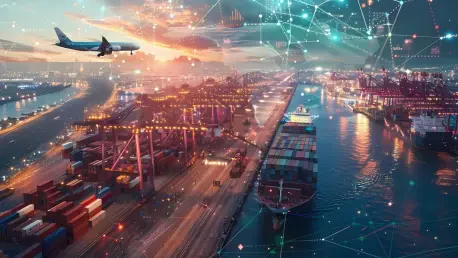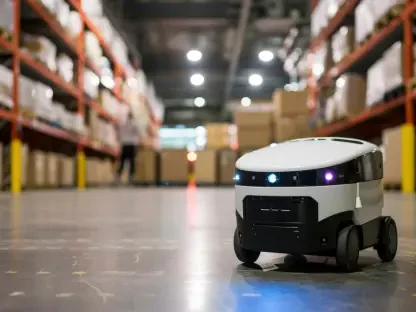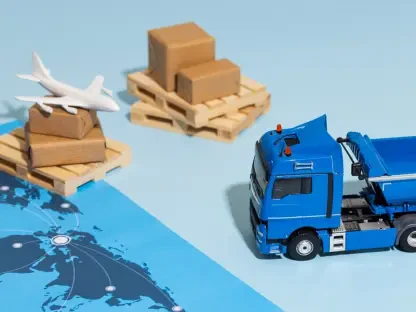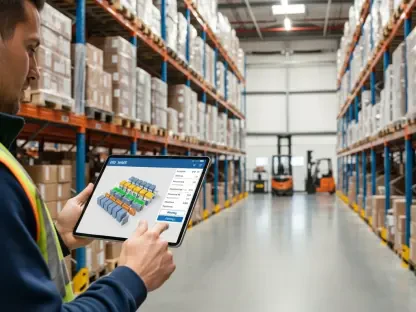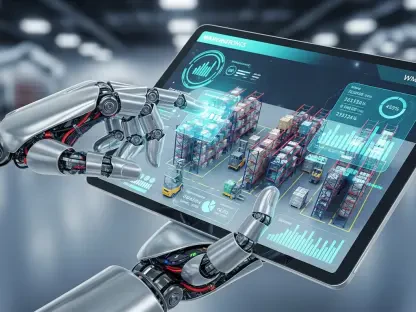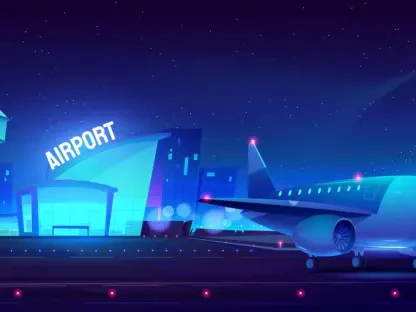Setting the Stage: The Urgency of Tech-Driven Logistics
In 2025, global supply chains stand at a critical juncture, grappling with unprecedented pressures from geopolitical instability, soaring consumer expectations, and the relentless pace of digital transformation, which collectively demand innovative solutions. A staggering 81% of shippers and logistics providers now view transportation as a competitive differentiator, a sharp rise from previous years, signaling a seismic shift in how businesses perceive logistics. This market analysis delves into the transformative role of artificial intelligence (AI) and advanced technologies in redefining supply chain dynamics. It aims to uncover key trends, data-driven insights, and future projections that can guide stakeholders through this complex landscape. The importance of this exploration lies in its potential to equip businesses with strategies to turn logistical challenges into opportunities for growth and resilience.
Deep Dive into Market Trends and Technological Shifts
AI-Powered Forecasting: Redefining Demand Planning
One of the most significant trends in 2025 is the rise of touchless forecasting, an AI-driven mechanism that automates demand planning by analyzing vast datasets in real time with minimal human input. This technology enables precise predictions, optimizes inventory levels, and allows planners to shift focus toward strategic priorities rather than routine tasks. Industry projections suggest that by 2030, around 70% of large organizations will adopt such AI-based systems, driven by benefits like accelerated market responsiveness and enhanced collaboration across teams.
Despite its promise, adoption remains constrained in 2025 due to lingering trust issues and the need for robust data governance. Many companies struggle with integrating disparate data sources, which can undermine the accuracy of automated forecasts. To capitalize on this trend, businesses must prioritize transparency in AI processes and develop clear data strategies that align with operational goals, ensuring that the potential for cost reduction and error minimization is fully realized.
Transportation Technology: A Strategic Advantage
Transportation has evolved from a mere operational necessity to a cornerstone of competitive strategy in today’s market. Recent surveys indicate that 96% of logistics providers and shippers are already leveraging generative AI for applications such as route optimization, freight forecasting, and automated load matching. However, a significant gap persists—only 17% have achieved full automation in transportation management systems (TMS), leaving a majority reliant on outdated manual processes.
This disparity between high-performers and laggards highlights an urgent need for broader technology adoption. With 80% of respondents planning to increase IT investments in areas like visibility and performance management, the market is poised for rapid advancement. Yet, challenges such as data integration complexities and regional disparities in tech uptake could slow progress. Addressing these hurdles through scalable TMS solutions and standardized systems will be critical for maintaining a competitive edge.
Manufacturing and E-commerce: Navigating Modern Challenges
Global manufacturers and e-commerce brands face mounting pressures to modernize supply chains amid volatile market conditions in 2025. Data reveals that 82% of manufacturing executives recognize AI as a key growth driver, with 85% planning substantial investments over the next year. Concurrently, e-commerce leaders are contending with tariff-induced price hikes—87% have already adjusted pricing—and growing consumer demand for transparency and convenience during peak seasons.
Regional variations add another layer of complexity, as North American firms emphasize risk management more heavily than their European counterparts. Additionally, trends like reshoring and cross-border expansion are reshaping sourcing strategies, with 45% of manufacturers planning to bring production closer to home markets. A critical insight here is that technology alone cannot address these issues; talent shortages and evolving customer expectations necessitate a comprehensive approach that blends innovation with strategic agility.
Future Projections: The Next Frontier in Supply Chain Evolution
Looking beyond 2025, the convergence of AI, automation, and advanced analytics is set to further revolutionize supply chain operations. Emerging technologies such as autonomous vehicles for last-mile delivery, blockchain for end-to-end traceability, and predictive analytics for disruption mitigation are gaining momentum. Economic factors like persistent tariffs and inflationary pressures are likely to accelerate trends toward localized sourcing, while regulatory demands for sustainability could mandate greener logistics practices by the end of the decade.
Speculative advancements, such as the potential integration of quantum computing for logistics optimization, are on the horizon, though scalability remains a concern. Industry forecasts suggest that by 2030, supply chains will predominantly operate on AI-driven frameworks, enabling real-time adaptability to market shifts. Companies that begin investing in these innovations now will likely secure a first-mover advantage as the pace of technological change continues to intensify.
Reflecting on Insights: Strategic Pathways Forward
This analysis of 2025 market dynamics reveals that AI and technology have become indispensable forces in transforming global supply chains, from touchless forecasting to transportation automation and sector-specific adaptations in manufacturing and e-commerce. The data underscores a clear divide between leaders who embrace digital tools and laggards who fall behind, highlighting the urgency of tech adoption. For businesses, the path forward demands a focus on scalable AI solutions, robust data frameworks, and workforce upskilling to navigate future disruptions. A key lesson is that strategic partnerships and pilot projects offer practical starting points for integrating automation without overwhelming existing systems. As the industry moves into subsequent years, these steps will prove vital for building resilient, adaptable supply chains capable of meeting tomorrow’s challenges.
